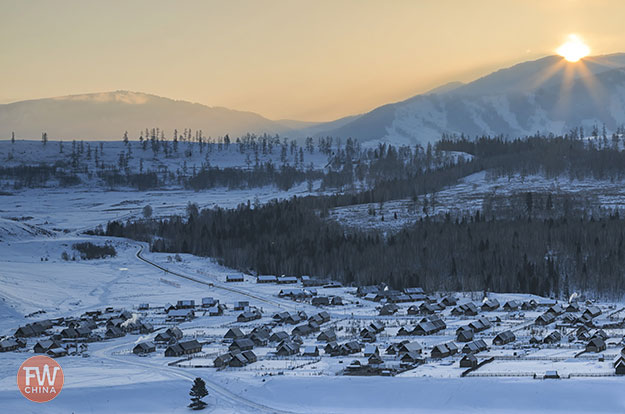Xinjiang in December: A Landscape of Extremes
December in Xinjiang, China's vast northwestern region, paints a picture of stark beauty and challenging weather conditions. This landlocked region, encompassing deserts, mountains, and basins, experiences a dramatic variation in temperatures and precipitation across its diverse geography, making a simple "average temperature" utterly misleading. Understanding the nuanced weather patterns of Xinjiang in December is crucial for any visitor or resident.
Temperature Extremes: A Tale of Two Xinjiangs
The key to understanding Xinjiang's December weather is recognizing its immense size and varied topography. While generalized statements about the average temperature are often offered (around -5°C / 23°F), the reality is far more complex.
Southern Xinjiang (Tarim Basin):
This region, encompassing cities like Kashgar and Hotan, is characterized by its arid, desert climate. Daytime temperatures here can hover around freezing (0°C / 32°F) or even slightly above, benefiting from the sun's warmth during the shorter days. However, nights are brutally cold, often plummeting to -10°C to -15°C (14°F to 5°F) or even lower in the desert areas. The lack of cloud cover contributes to significant radiative cooling overnight. This creates a dramatic diurnal temperature swing.
Northern Xinjiang (Junggar Basin and Altai Mountains):
This area experiences far colder temperatures. Average highs might struggle to reach -5°C to -10°C (23°F to 14°F), while nighttime lows can easily drop to -20°C to -30°C (-4°F to -22°F) or even colder in higher elevations. Snowfall is more frequent here than in the south, further exacerbating the cold. The Altai Mountains experience the most extreme cold, with temperatures potentially dipping well below -30°C (-22°F).
Eastern Xinjiang (Turpan Depression):
This unique region, a vast depression, is an exception. Although still cold, it is generally milder than Northern Xinjiang, with less snow due to its rain shadow effect. However, due to its low elevation, extremely cold air can pool, leading to cold spells.
Precipitation: Snow, but not Always
While many imagine Xinjiang as a perpetually snowy landscape in December, the reality is more nuanced. Snowfall is more common in the northern and mountainous areas, with significant accumulations possible in the Altai Mountains. The southern Tarim Basin, however, is much drier, with snowfall relatively infrequent and often limited to light dusting.
Wind: A Constant Factor
Strong winds are a consistent feature across much of Xinjiang in December. These winds can dramatically increase the "wind chill factor," making the already cold temperatures feel significantly colder. This is particularly noticeable in the open plains and desert areas.
Impact on Daily Life:
The cold and variable weather conditions significantly impact daily life in Xinjiang during December. Transportation can be affected by snow and ice, particularly in mountainous regions. Outdoor activities are limited, and heating becomes crucial for both homes and businesses. Many traditional winter activities, like nomadic herding, require careful planning and preparation to mitigate the risks posed by the harsh weather.
Conclusion:
December in Xinjiang is a season of extremes. While a single average temperature fails to capture the diverse climatic conditions across the region, understanding the geographical variations in temperature and precipitation is crucial. Visitors should be prepared for bitterly cold nights, potential snowfall in the north, and always pack layers for protection against the cold and wind, no matter which part of Xinjiang they plan to explore. Thorough research and appropriate preparation are essential for a safe and enjoyable experience in this fascinating but challenging environment.
















